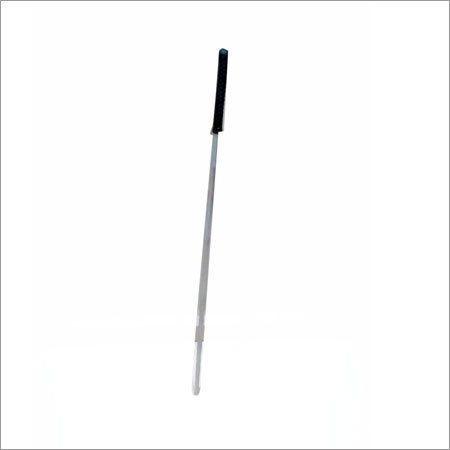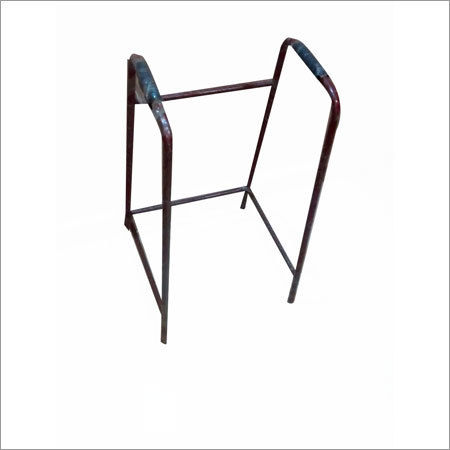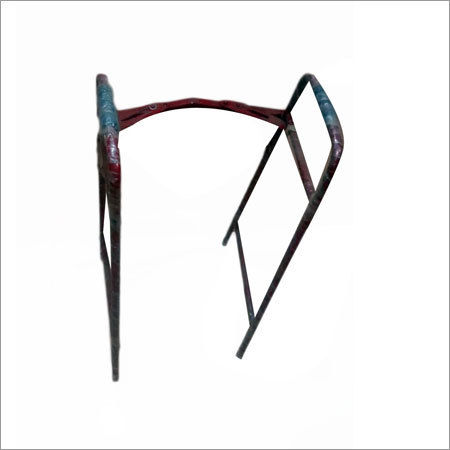
Elbow Crutches
Product Details:
Elbow Crutches Price And Quantity
- 10 Unit
Elbow Crutches Trade Information
- Cash Advance (CA)
- 1000 Unit Per Month
- 10 Days
- All India
Product Description
People who need assistance walking use elbow crutches, commonly referred to as forearm crutches or Lofstrand crutches. Elbow crutches are made to provide support from the forearm to the hand, unlike conventional underarm crutches that go all the way up to the armpits. People who have ongoing lower limb problems or transient injuries frequently utilise them.
The following are some essential qualities and elements of elbow crutches:
1. Forearm cuff: Just below the elbow, on elbow crutches, there is a cuff that goes around the forearm. The cuff is typically adjustable to fit different arm sizes and composed of a sturdy material, like plastic or metal. It offers assistance and helps the user evenly distribute their weight on the crutches.
2. Handgrip: Below the forearm cuff on each elbow crutch is a handgrip. The handgrip is ergonomically designed to offer a firm and comfortable grip. While walking, it enables the user to support weight and keep their balance.
3. Height adjustment: Telescopic shafts or push-button systems are frequently found on elbow crutches. The crutches may be adjusted to the user's height thanks to this innovation, giving them the best possible support and comfort.
4. Tip: Each crutch features a rubber or plastic tip on the bottom end that offers stability and traction on a variety of surfaces. To retain grip as they deteriorate over time, some tips might be replaceable.
When using elbow crutches, the forearm is inserted into the cuff while the hand grips the handgrip. The user steps with the injured leg while leaning on the crutches. The process is then repeated while moving the crutches forward.
Compared to conventional underarm crutches, elbow crutches have a number of advantages. They free up the hands, enabling people to do out tasks while using the crutches, increasing mobility and independence. They lessen the chance of discomfort and nerve damage that may result from using underarm crutches for an extended period of time.
When utilising elbow crutches, it's critical to guarantee adequate fit and adjustment. It is advised to get the advice of a medical practitioner or physical therapist to establish the proper height setting and to learn the right methods for using elbow crutches and bearing weight.
FAQ
1. What are elbow crutches used for?
Ans - Elbow crutches, often referred to as Axilla Crutches, are a sort of mobility aid used to support people who have limited movement. They give the users' trunk and upper extremities more support, which lowers the risk of falls and enhances motor coordination, balance, and gait.
2. How exactly do elbow crutches work?
Ans- In a 2-point gait, which involves simultaneously placing weight on one elbow crutch and the opposing foot, elbow crutches are frequently employed. The user must first check that the crutch is the suitable length and that the cushioning is comfortable. After that, they should position the crutch just in front of the foot and lean forward onto it and the foot. The crutch is then positioned just in front of the other foot once the stride has been finished.
3. What advantages can elbow crutches offer?
Ans - Users of elbow crutches may benefit from enhanced independence and movement. They can offer stability and improved balance, are lightweight, and are simple to manoeuvre. Additionally, they offer assistance and lower the chance of falling.
4. Is there any danger in utilising elbow crutches?
Ans - Users of elbow crutches should be aware of any potential dangers as with any mobility aid. These can include using the crutches excessively or walking with a shaky gait. Incorrect use might also result in musculoskeletal strain and damage.
5. How should my elbow crutches be maintained?
Ans - To ensure safe and efficient use, proper maintenance and care must be given to the crutches. Regular inspection and tightening of the crutches is advised. The tips of the crutches should be clear of dirt and debris. The crutches should also be kept in a dry location when not in use.

Price:
- 50
- 100
- 200
- 250
- 500
- 1000+
Other Products in 'Walking Aids ' category
 |
Ezzi Iron Works
All Rights Reserved.(Terms of Use) Developed and Managed by Infocom Network Private Limited. |

 Send Inquiry
Send Inquiry




